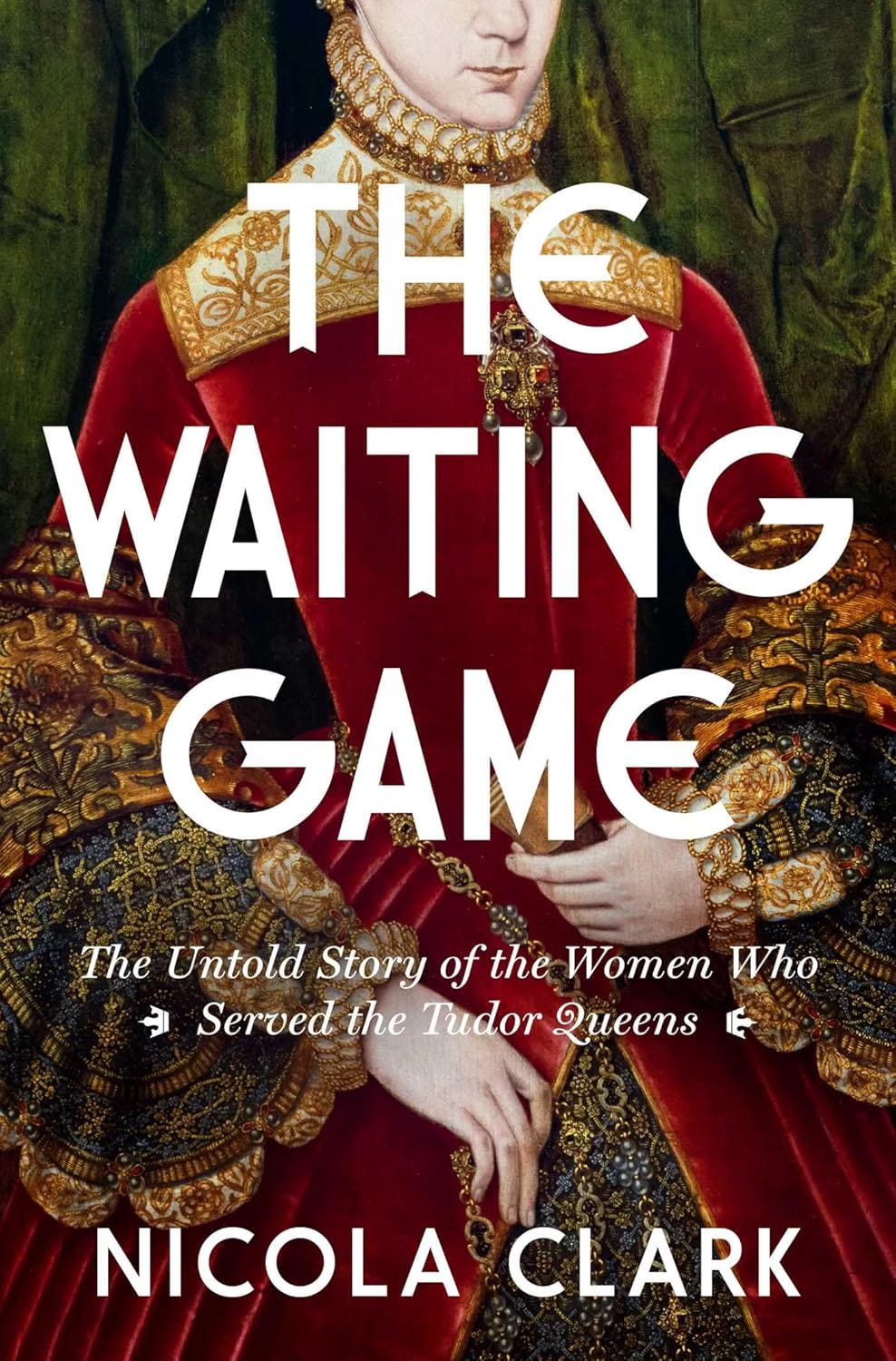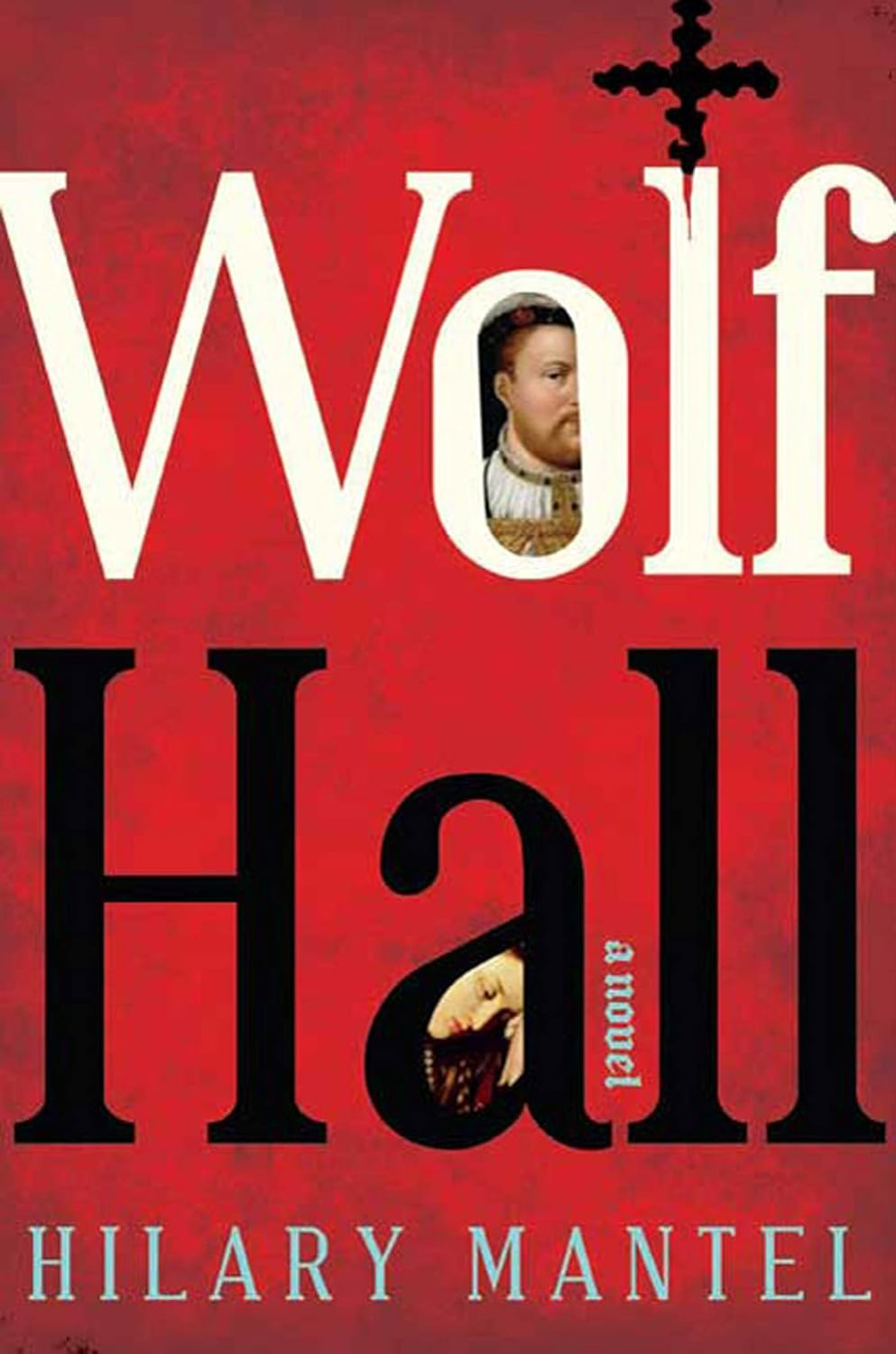Here’s something you don’t know about me: I have a longstanding fascination with Tudor England. Specifically, I love reading about the courts of Henry VII, Henry VIII, and Elizabeth I.

This period of history has been fertile ground for contemporary writers of historical fiction. Philippa Gregory’s series of novels about the women of the Plantagenet and Tudor courts have inspired feature films like The Other Boleyn Girl starring Scarlett Johansson and Natalie Portman.
I recently read The Waiting Game: The Untold Story of the Women Who Served the Tudor Queens by Nicola Clark.
This book explores the Tudor world through the lives of the ladies-in-waiting to Henry VIII’s six queens. From Maria de Salinas, who came to England from Spain as a teenager in the retinue of Catherine of Aragon, to Anne Basset, who served in the households of Jane Seymour, Anne of Cleves, Catherine Howard, and Catherine Parr, we see both the extent and the limits of women’s power.
This is a work of narrative history, not fiction. The author is a Lecturer in Early Modern History at the University of Chichester. Fortunately, she writes with a lively and engaging style. Drawing from archives of letters, diaries, and legal documents, Clark paints a compelling picture of life as part of a 16th century queen’s household.
I was frankly surprised at the existence of enough archival material to support a book like this. Until the mid-19th century, women in England (and much of the rest of the world) were subject to coverture, the doctrine in which the legal identity of a married woman was considered to be subsumed by that of her husband. Since she had no independent legal identity, she was not often mentioned in the official records that tell us so much about Tudor men.
But Clark’s devotion to primary sources is evident throughout this book. The last quarter of the book is occupied by footnotes citing the source of each assertion. (I usually don’t read the footnotes, but I’m reassured to know they are there.) She is quick to separate facts from conjecture, and to point out gaps in the historical record.
If you, like me, are curious about the richly dressed women arranged like a frame around Tudor queens, I think you’ll enjoy The Waiting Game.
This book was the perfect warm-up for binge-watching Wolf Hall: The Mirror and the Light.
This series premiered on PBS March 23rd. If you are a member of your local PBS station, you can stream all six episodes now on PBS Passport. I spent two glorious evenings immersed in the world of Henry VIII and his consigliere, Thomas Cromwell.
This series and its predecessor, Wolf Hall, are based on Hilary Mantel’s fiction trilogy about Cromwell’s rise and fall. The Mirror and the Light, the third book in the trilogy, covers the period from the execution of Anne Boleyn (wife #2) to Cromwell’s own execution on the day Henry married Catherine Howard (wife #5).
The Mirror and the Light is a visual feast. Much of the filming was done on location at castles, abbeys, and manor houses owned by England’s National Trust. The costumes were designed with scrupulous dedication to period accuracy in materials and construction techniques. The lighting replicates the chiaroscuro effect of daylight through small windows set in thick stone walls and of candlelight at night.
I was captivated by Mark Rylance as Thomas Cromwell, a man who wields great power in the service of a fickle and capricious king. The subtlety of Rylance’s performance brings nobility and humanity to a character often depicted as ruthless and bloodthirsty. Fun fact: Rylance played Anne Boleyn’s father, Thomas Boleyn, in The Other Boleyn Girl.
You do not need to have watched Wolf Hall, which covers the first two books in Mantel’s trilogy, to enjoy The Mirror and the Light. But why wouldn’t you? Wolf Hall is available to stream through PBS Passport until May 31.
Wolf Hall is particularly good in combination with The Waiting Game. Anne Boleyn’s ladies-in-waiting were Cromwell’s primary sources for inside information about Anne’s thoughts and actions. Cromwell may not have been able to build a case in support of the (spurious?) adultery charges that led to Anne’s beheading without the testimony of these women. You can see the fictional depiction of these characters and events in Wolf Hall, then read about the real women in The Waiting Game.
If you’re eager to read Hilary Mantel’s Thomas Cromwell trilogy (and I highly recommend you do!), I suggest you read it in paper rather than listen to the audiobook. I tried the audiobook first and had a hard time keeping track of who was who. There are too many Thomases, Richards, Henrys, Catherines and Janes. Sometimes they are referred to by title (i.e., the Duke of Norfolk, or just Norfolk), sometimes by name (i.e., Thomas Howard). The hardcover book begins with a list of the characters and their relationships. I found it very helpful.
It has nothing to do with any of the Tudors, but Knit Picks just published one of my designs: the Ribs and Lace Cardigan.
This light summer layer was knit in Memento, a DK weight Pima cotton. Find the pattern on Ravelry here, or make it a kit by ordering both the yarn and the pattern here.
Some things that caught my eye…
Subscriber Marie Bailey is participating in the Knit for Food Knit-a-Thon! Won’t you join me in supporting her efforts by making a donation here? All money raised is divided evenly between Feed America, World Central Kitchen, Meals on Wheels, and No Kid Hungry.
The New York Times gives us another close look at a piece of art, this time a poem by Adrienne Rich.
One of my favorite art museums, The Frick Collection in New York, has reopened after a $220 million renovation and expansion. Until I can plan a trip north, I’m enjoying this look at the new spaces.
As always, thank you for inviting me into your world. I appreciate your indulging me in this diversion. Join the conversation: Is there a particular period of history that fascinates you? Or do you share my interest in the Tudors? Tell us about it in the comments.







Good morning, Sandi. Yes, I do both Libby and Hoopla. THank you for the reminder to check Libby. :-) I just finished Fever in the Heartland by Tim Egan. Wow! What a frightening time in our history... Thus, I am happy to have something a bit lighter :-)
Hey, thank you for the shout-out! I'm a bit nervous about knitting day ... sigh. April 5 is also a major rally/protest day. My husband and a couple of friends want to participate in a rally at our capitol. I said I could probably knit while standing (but not while holding a sign so that's on them). To honor my commitment to the Knit-a-Thon, I'll need to start knitting way early in the day. It should be fine, it's just the usual trying to do too much at once.
Thanks for the book recommendations. We started watching The Mirror and the Light. Kind of creepy how much Henry VIII's behavior and the court politics reminds me of our current state of affairs. Ugh. But the acting is so good and, yes, the set design and costumes.
That's a lovely spring cardigan. Congrats on its publication!